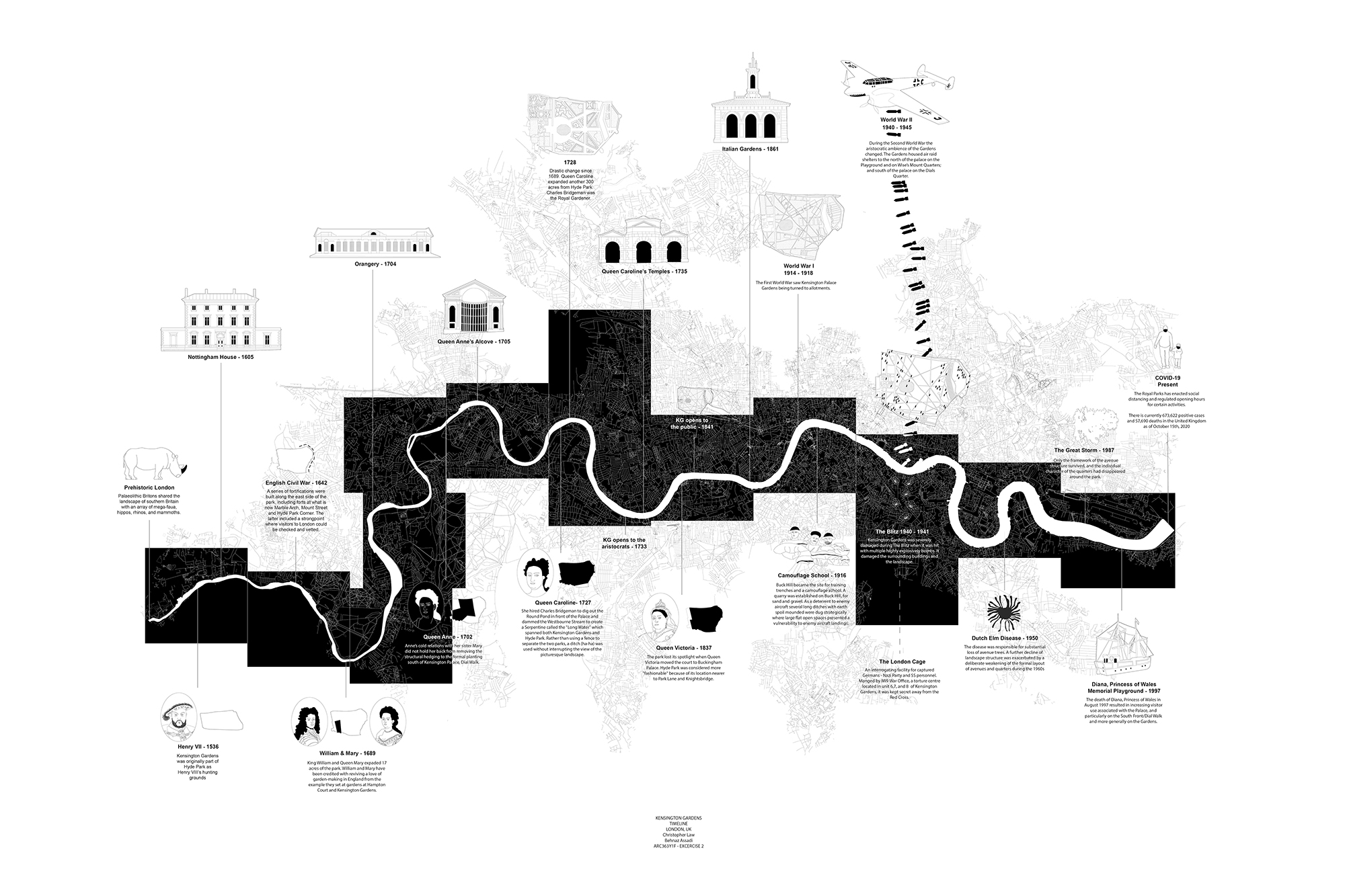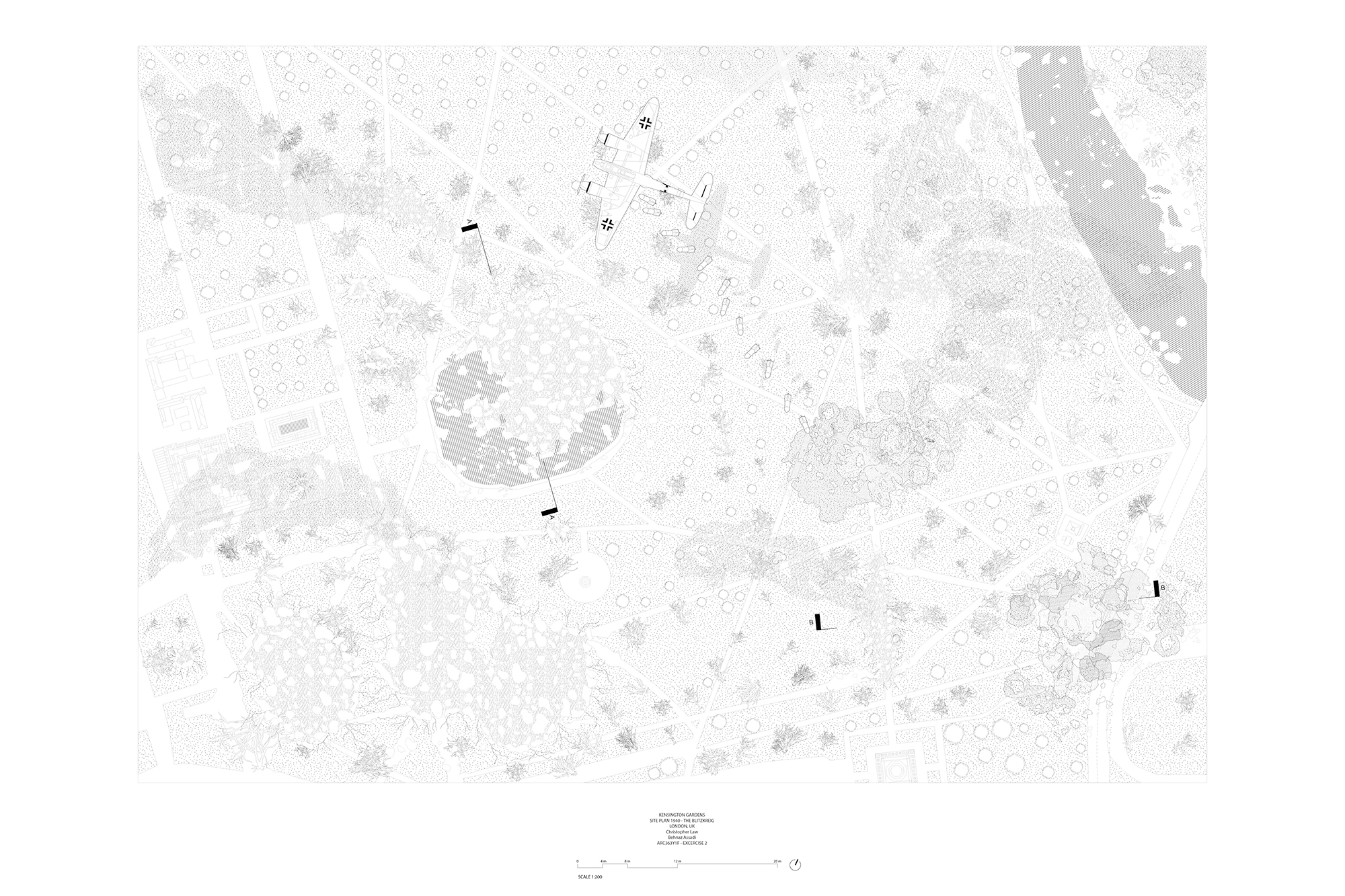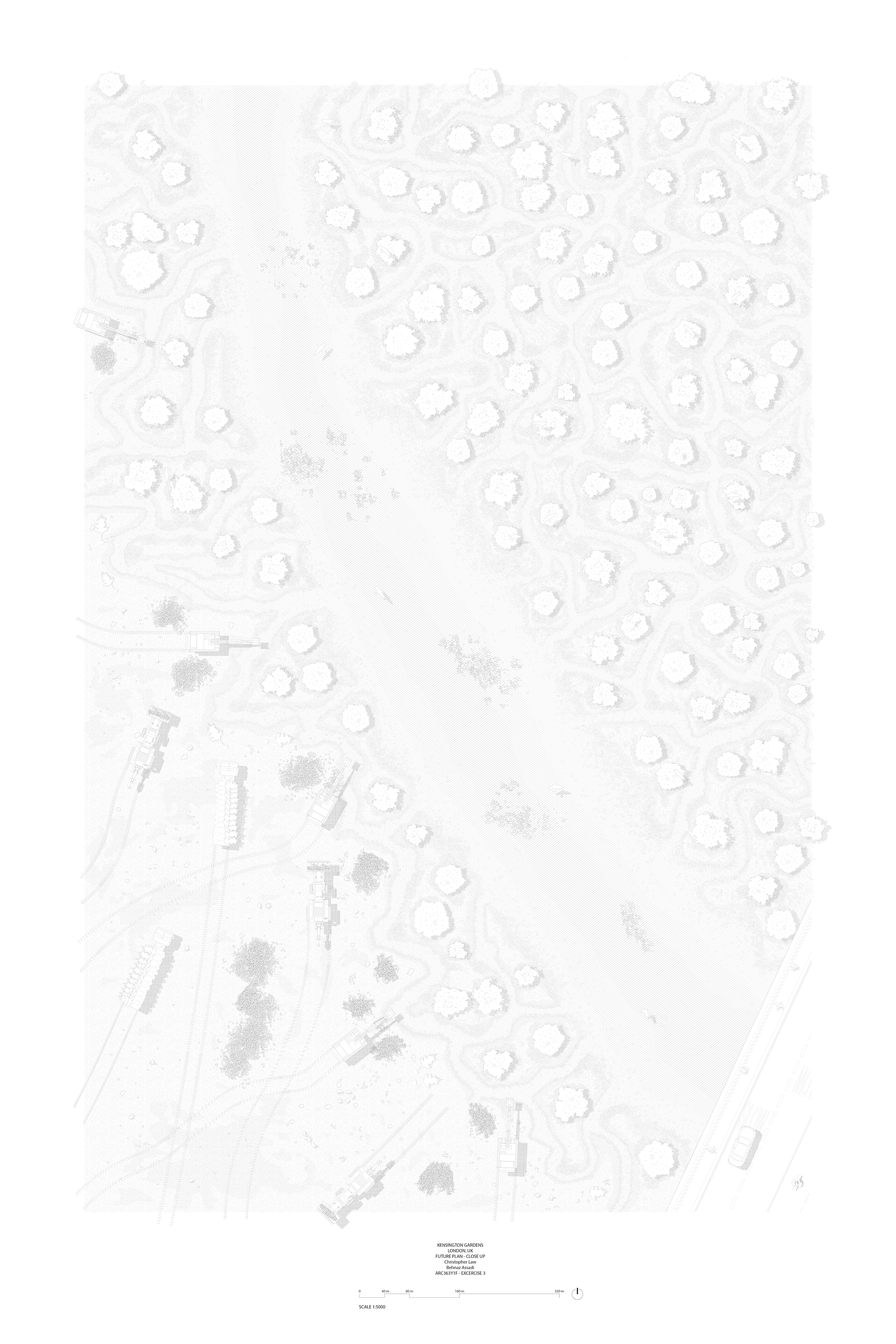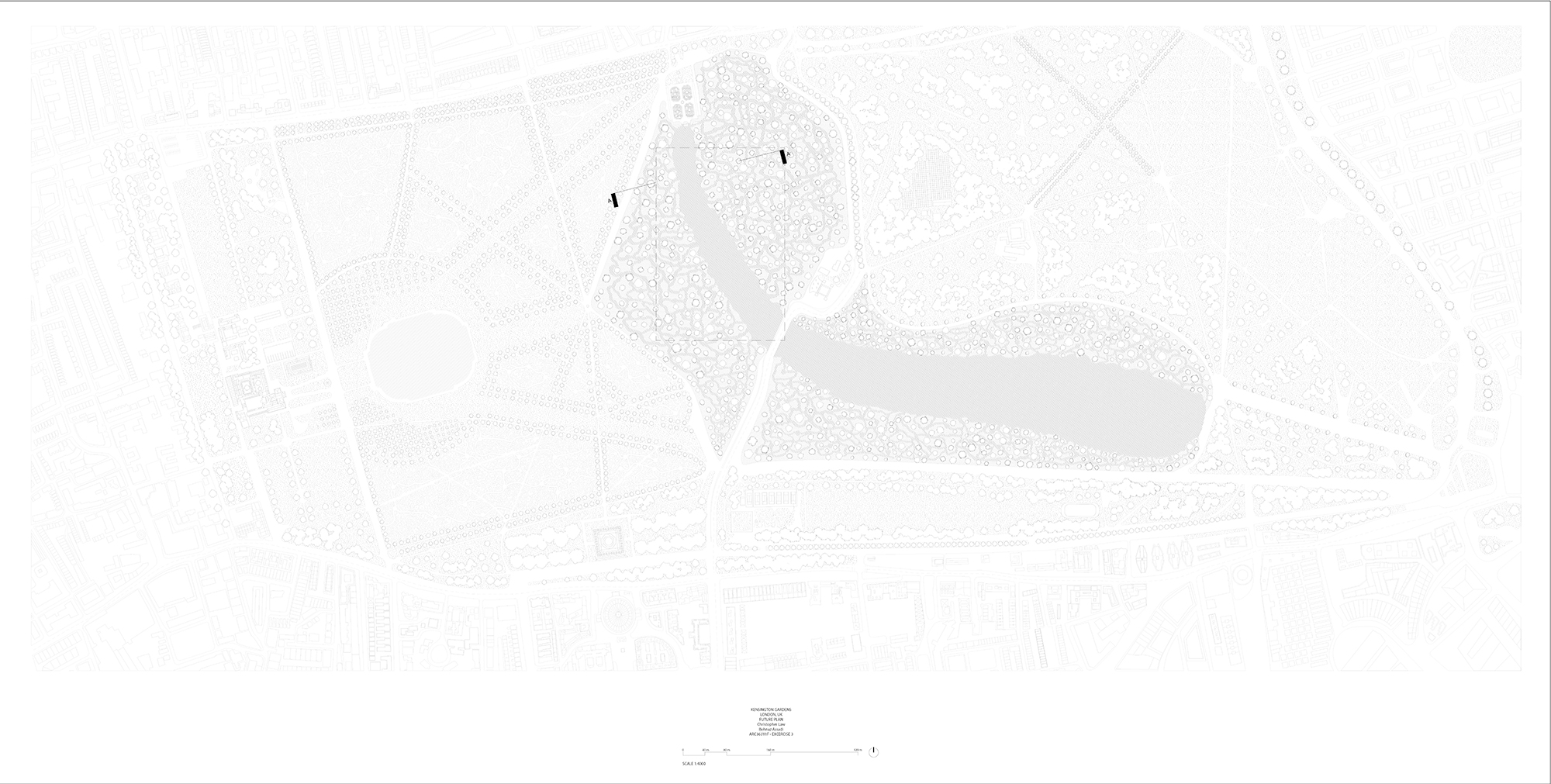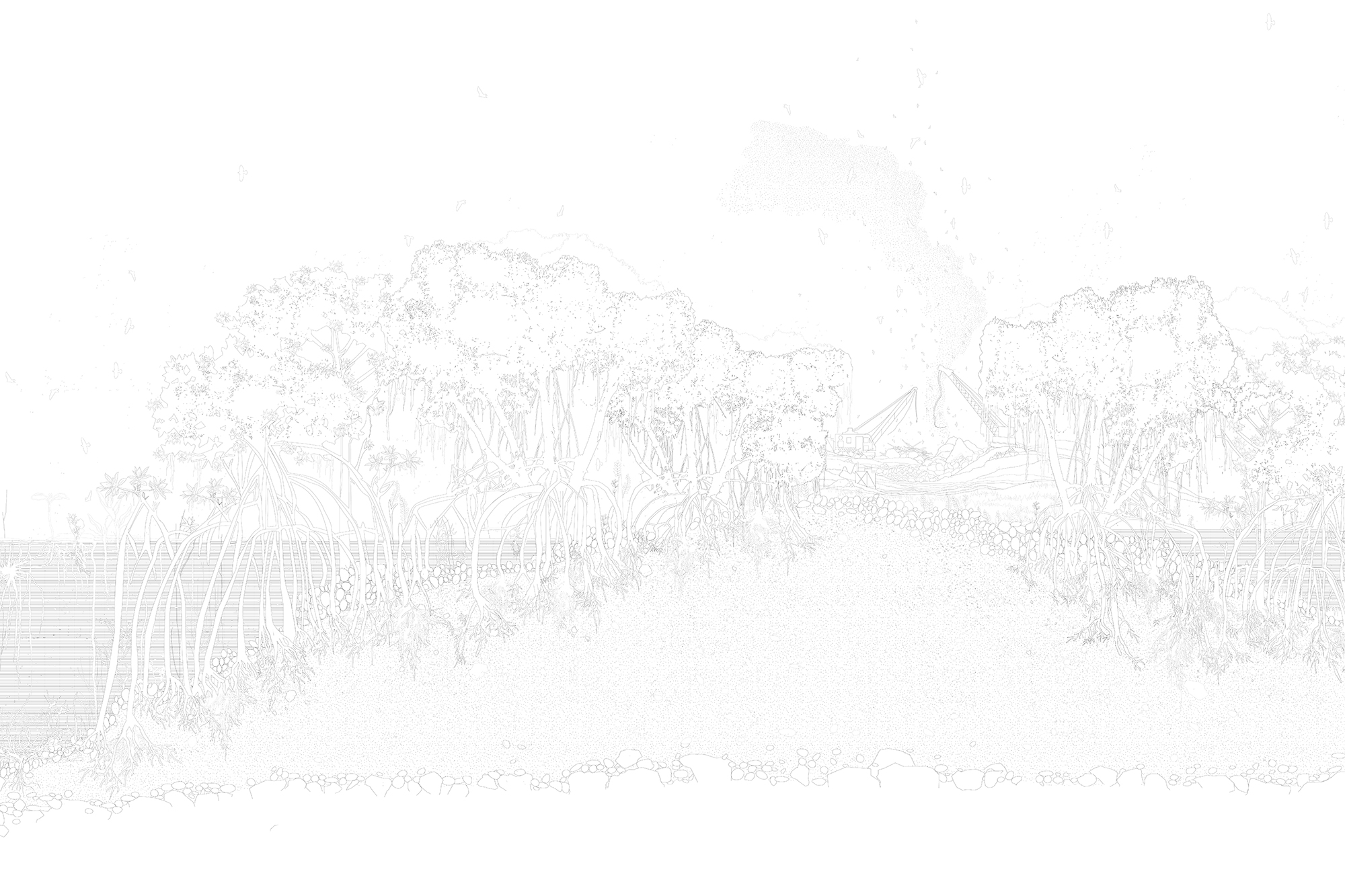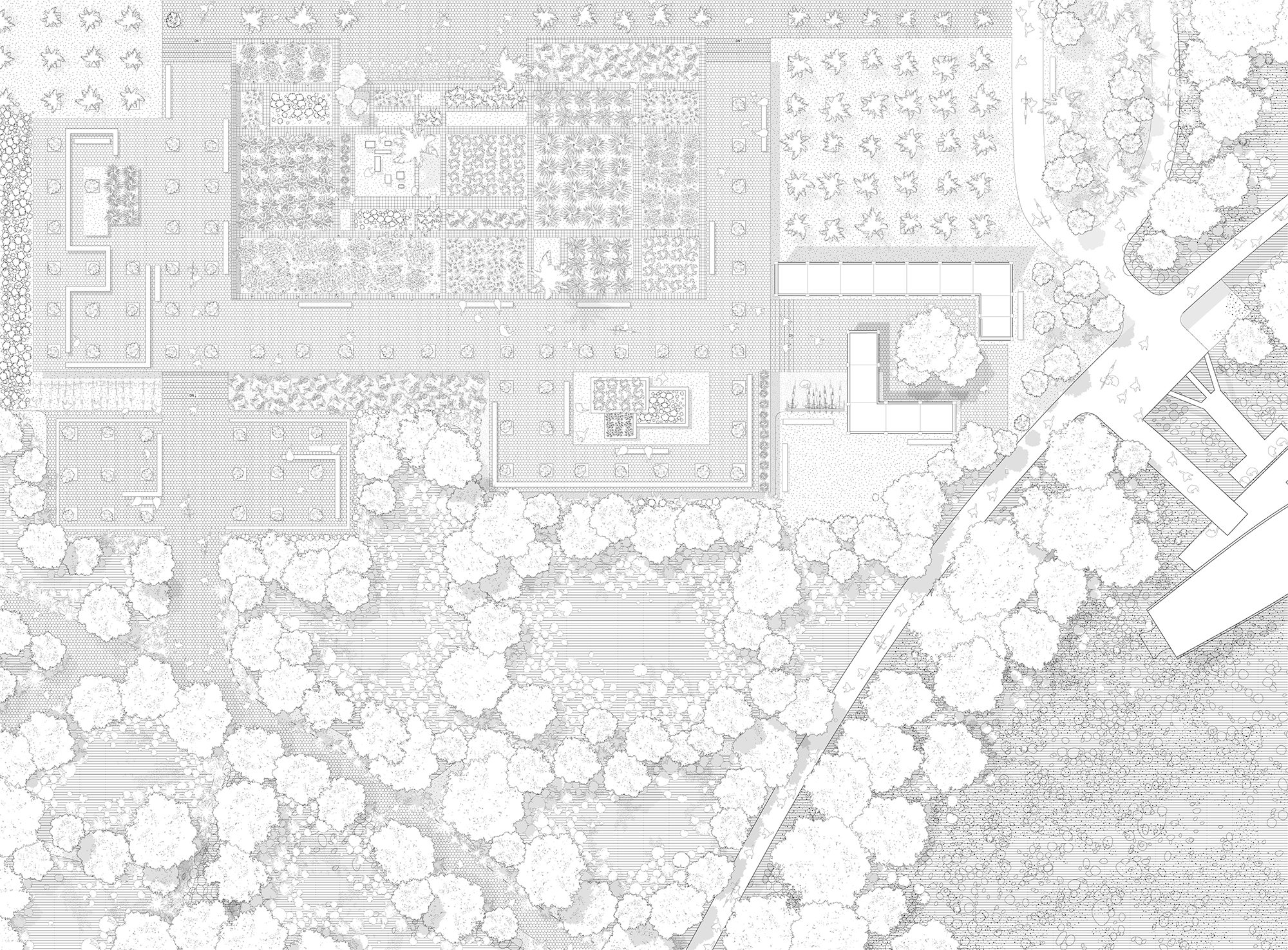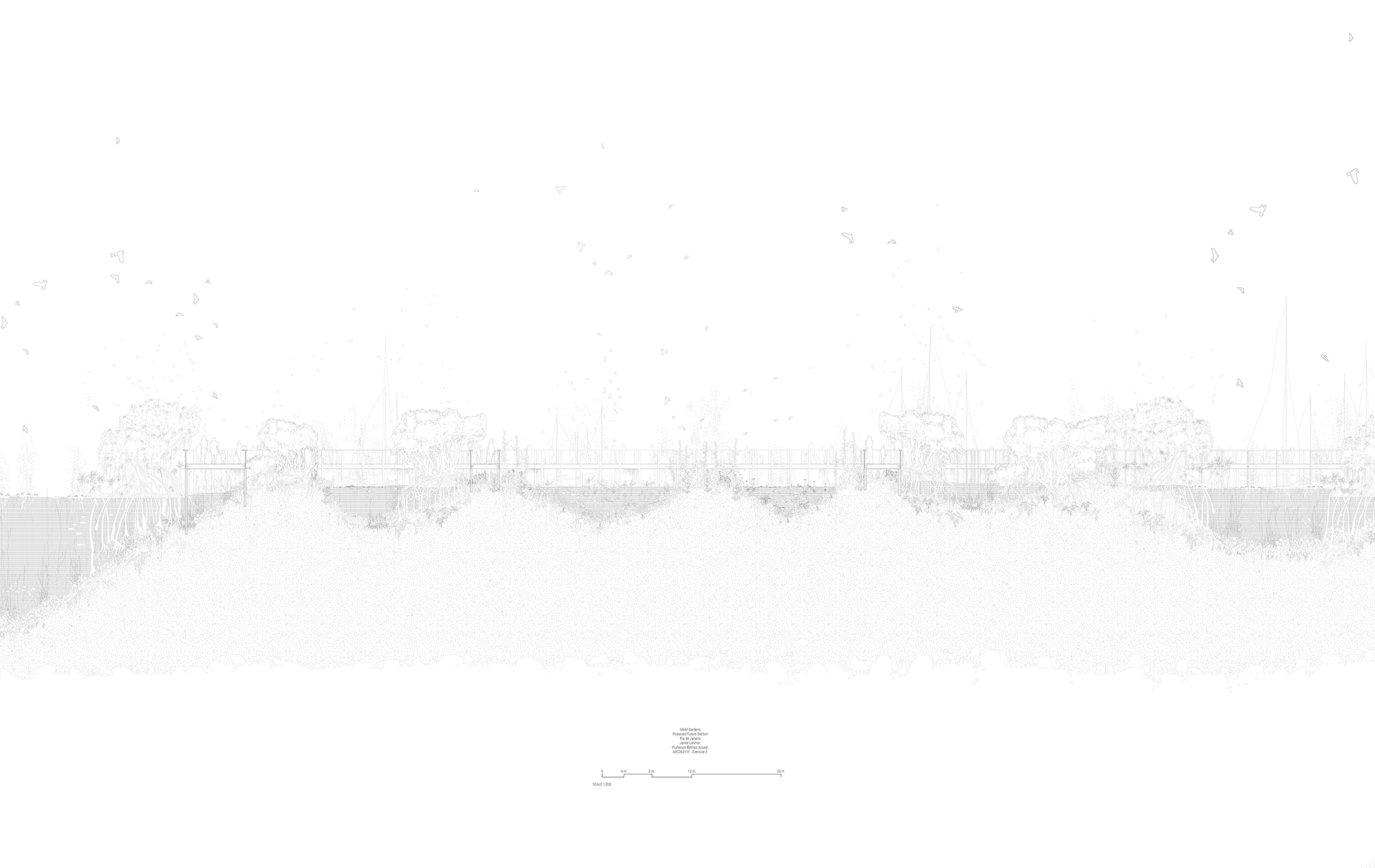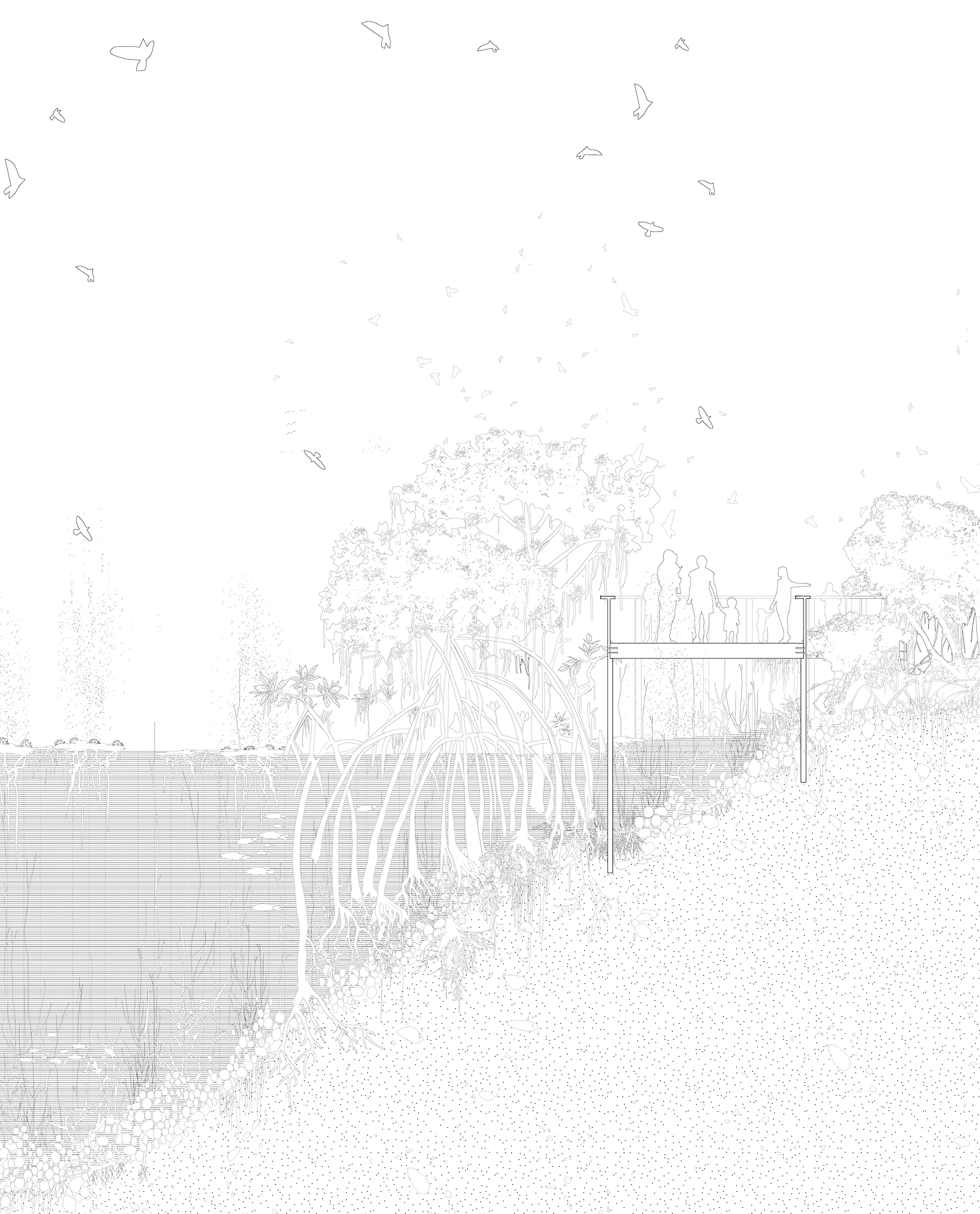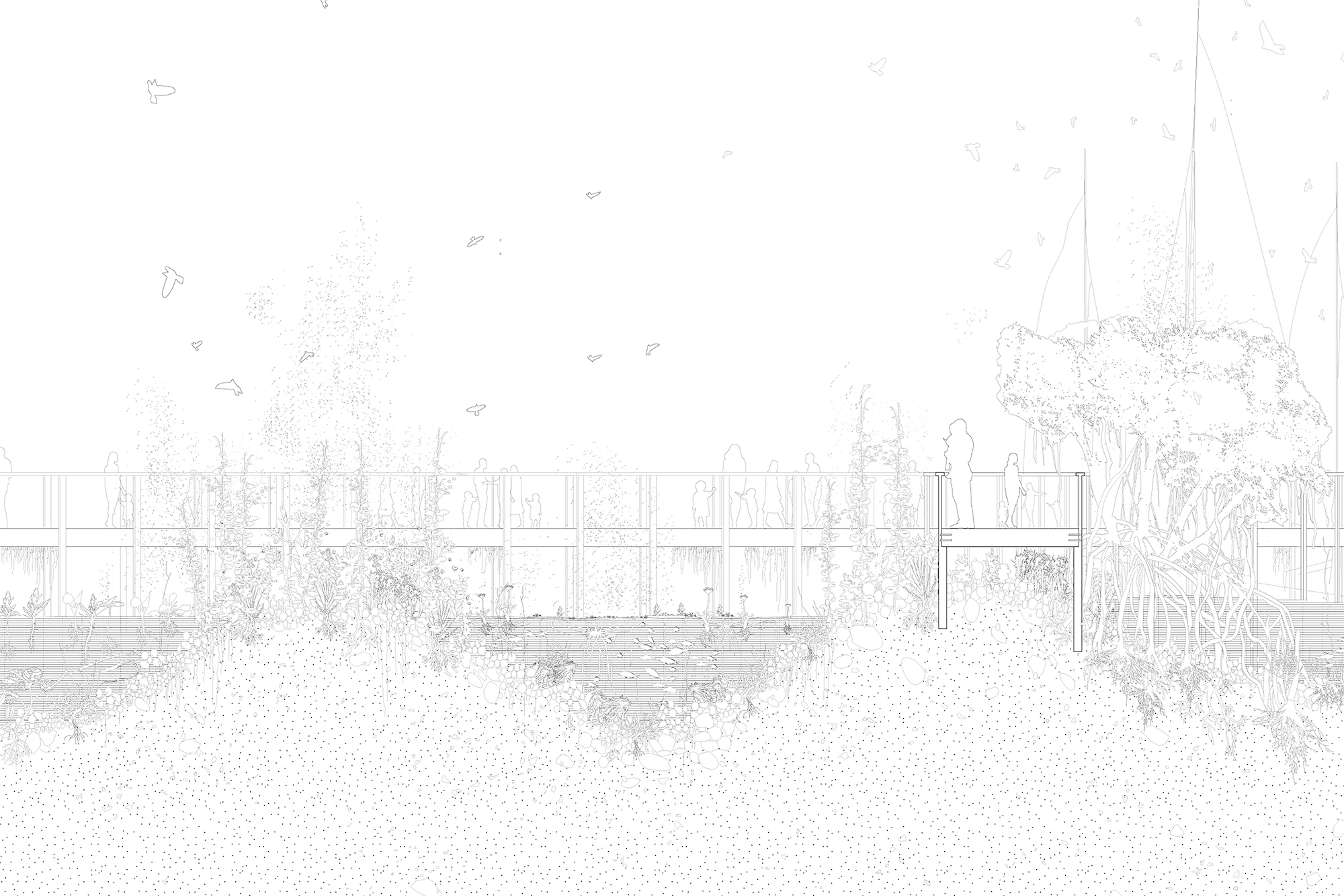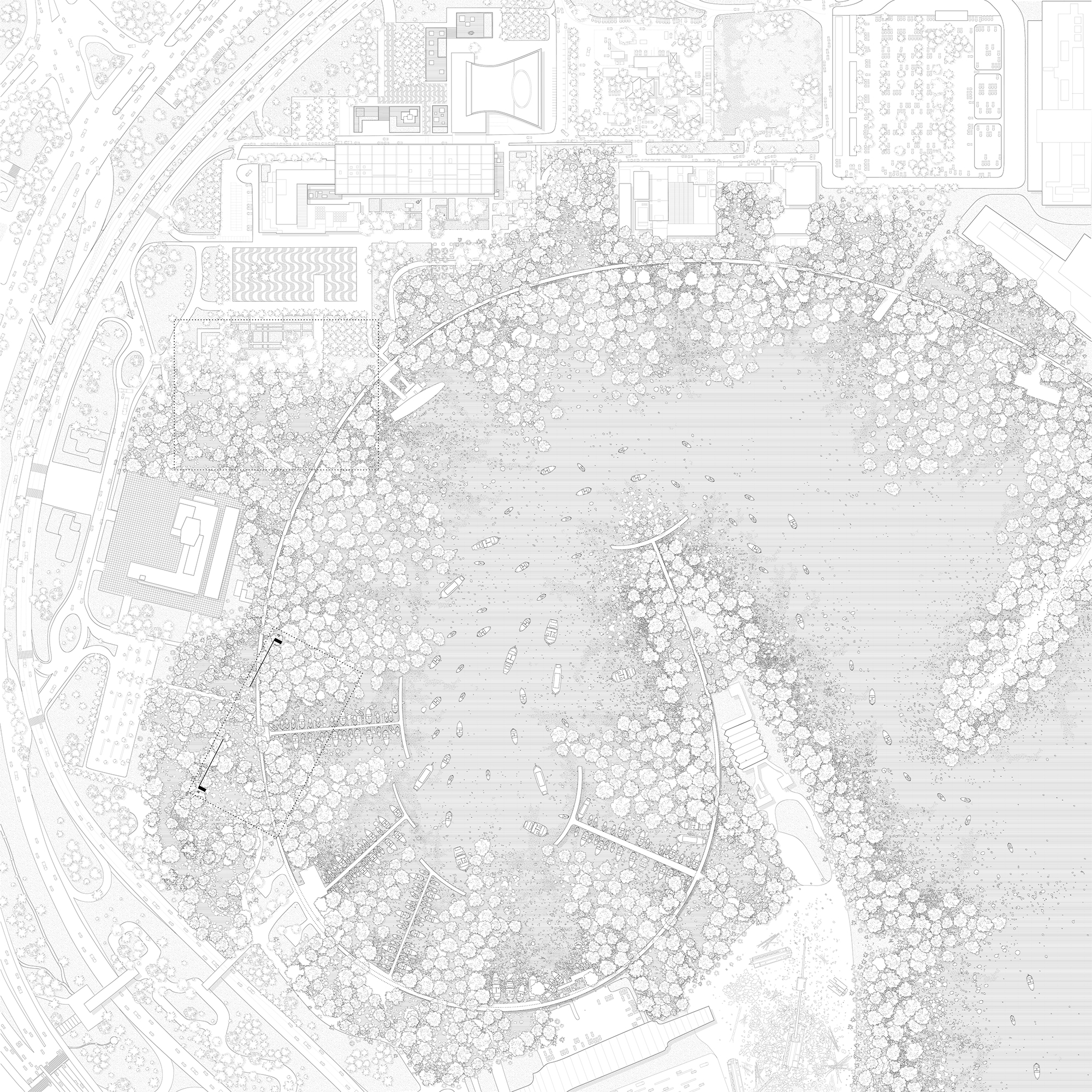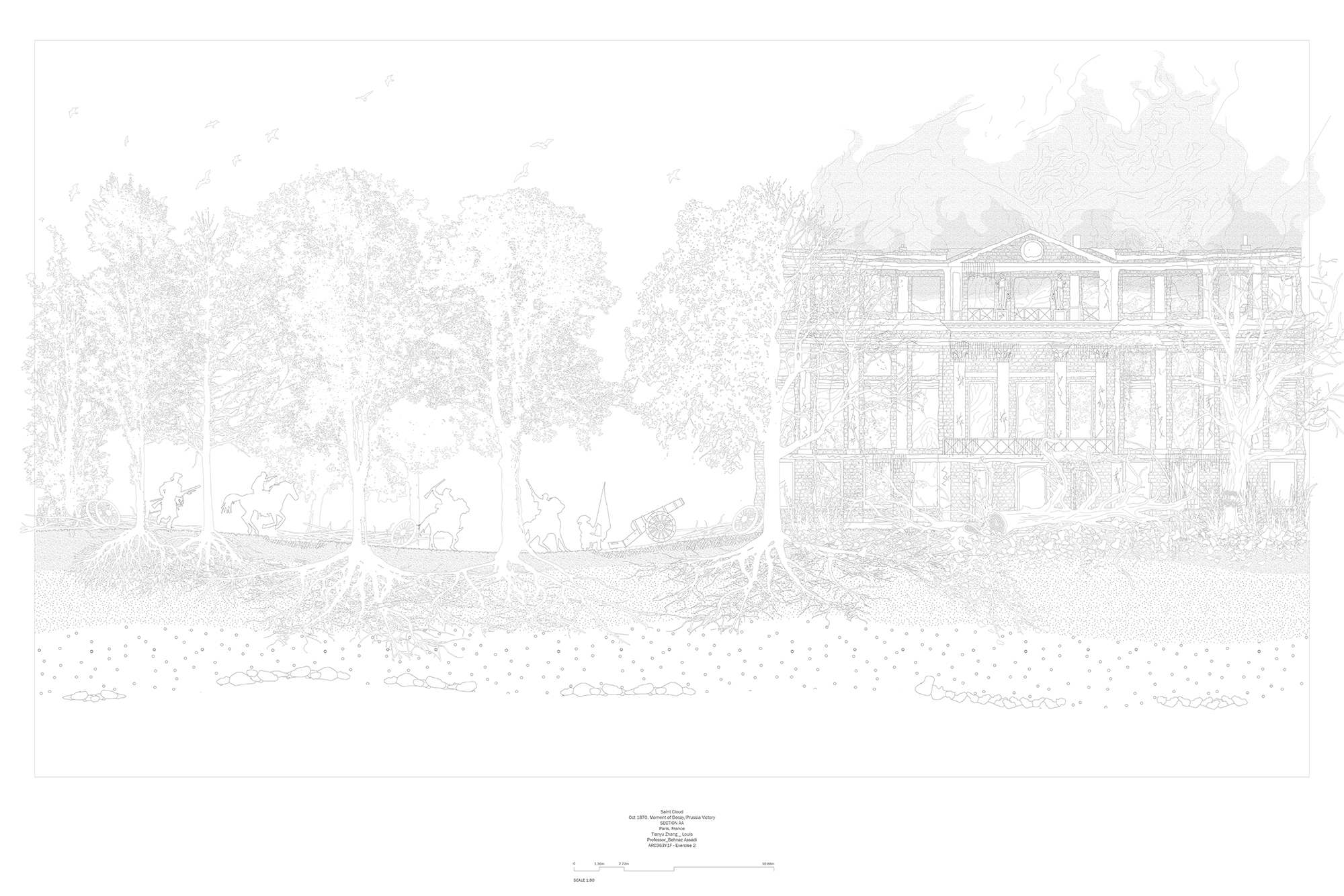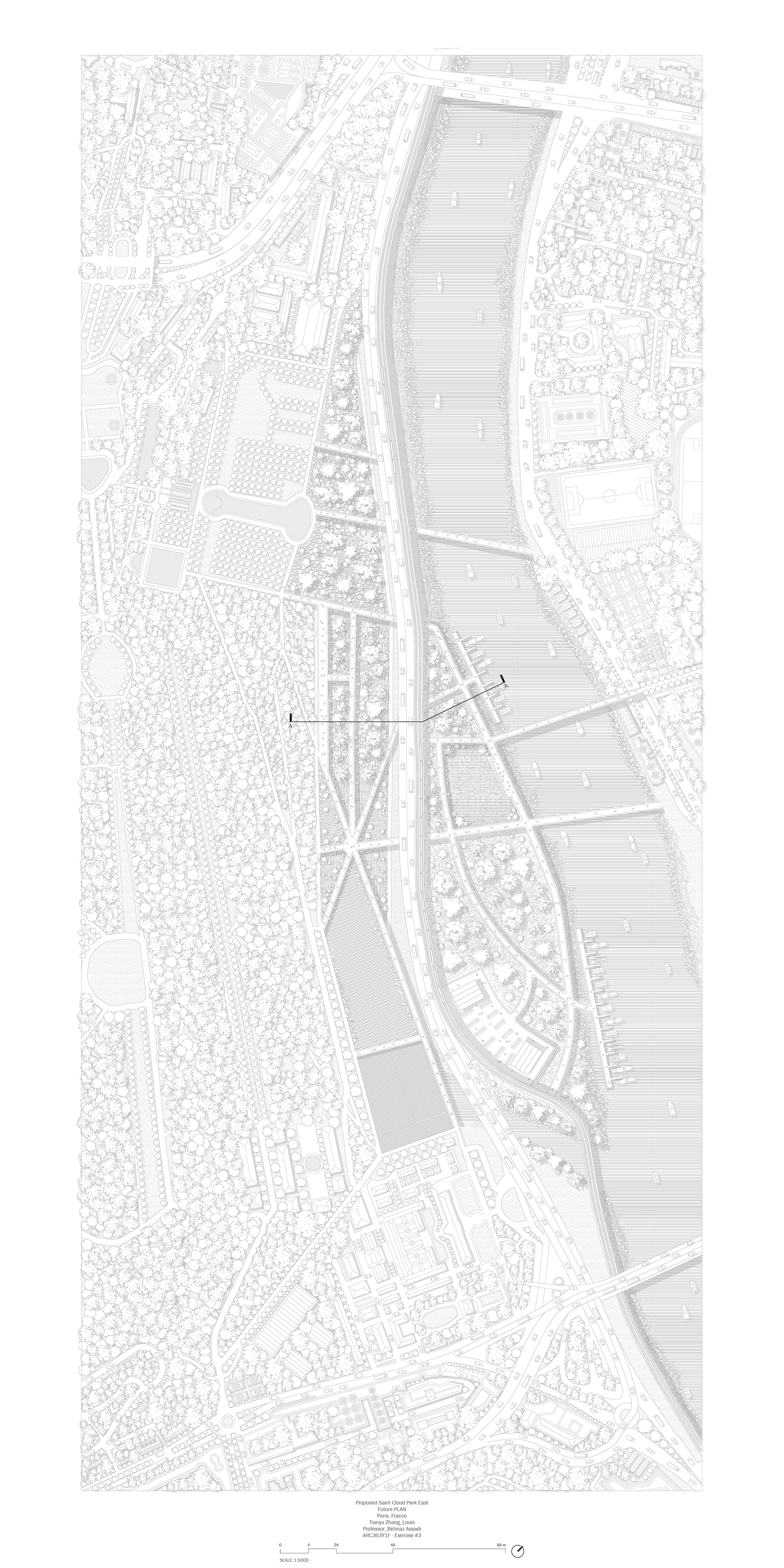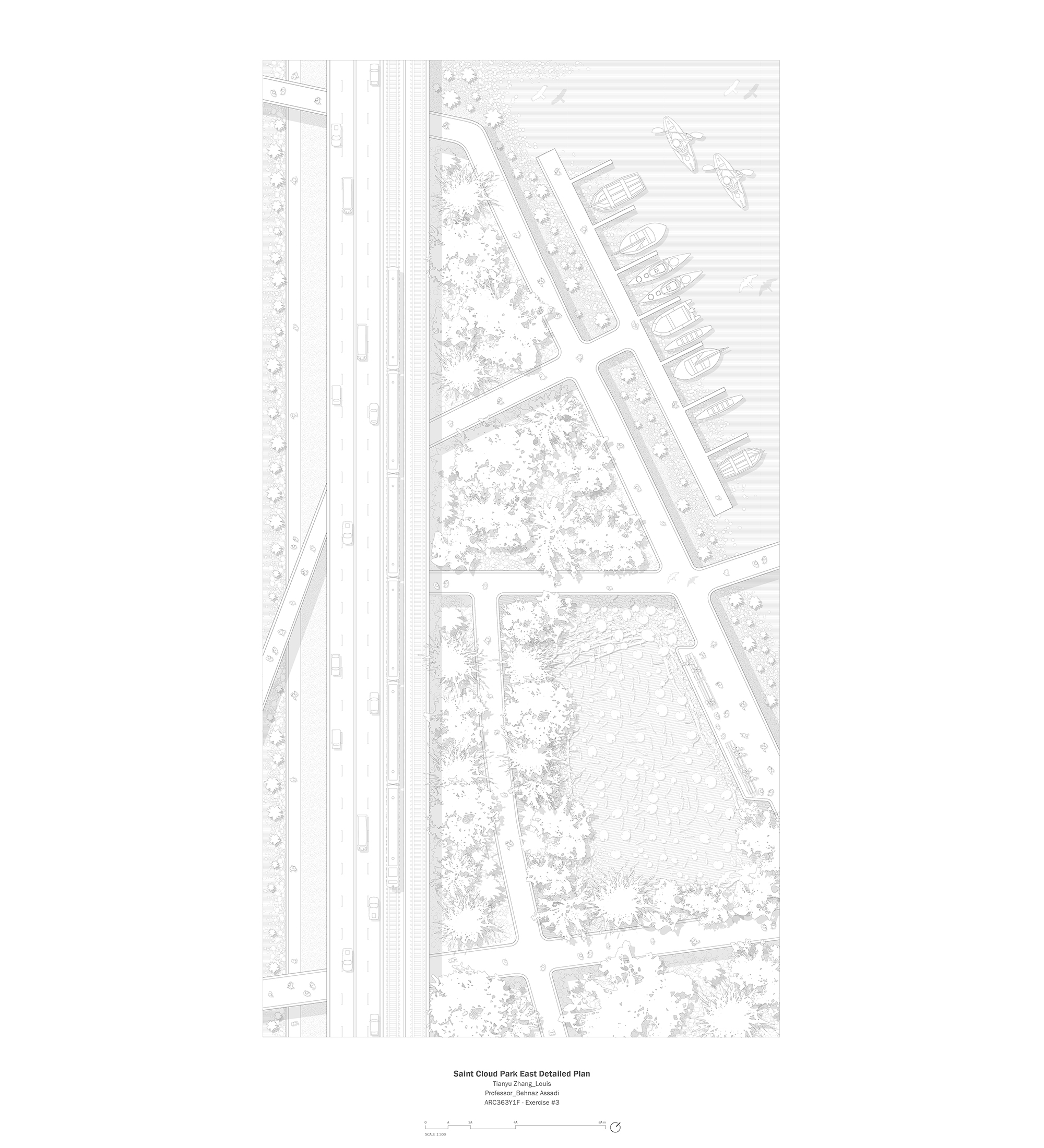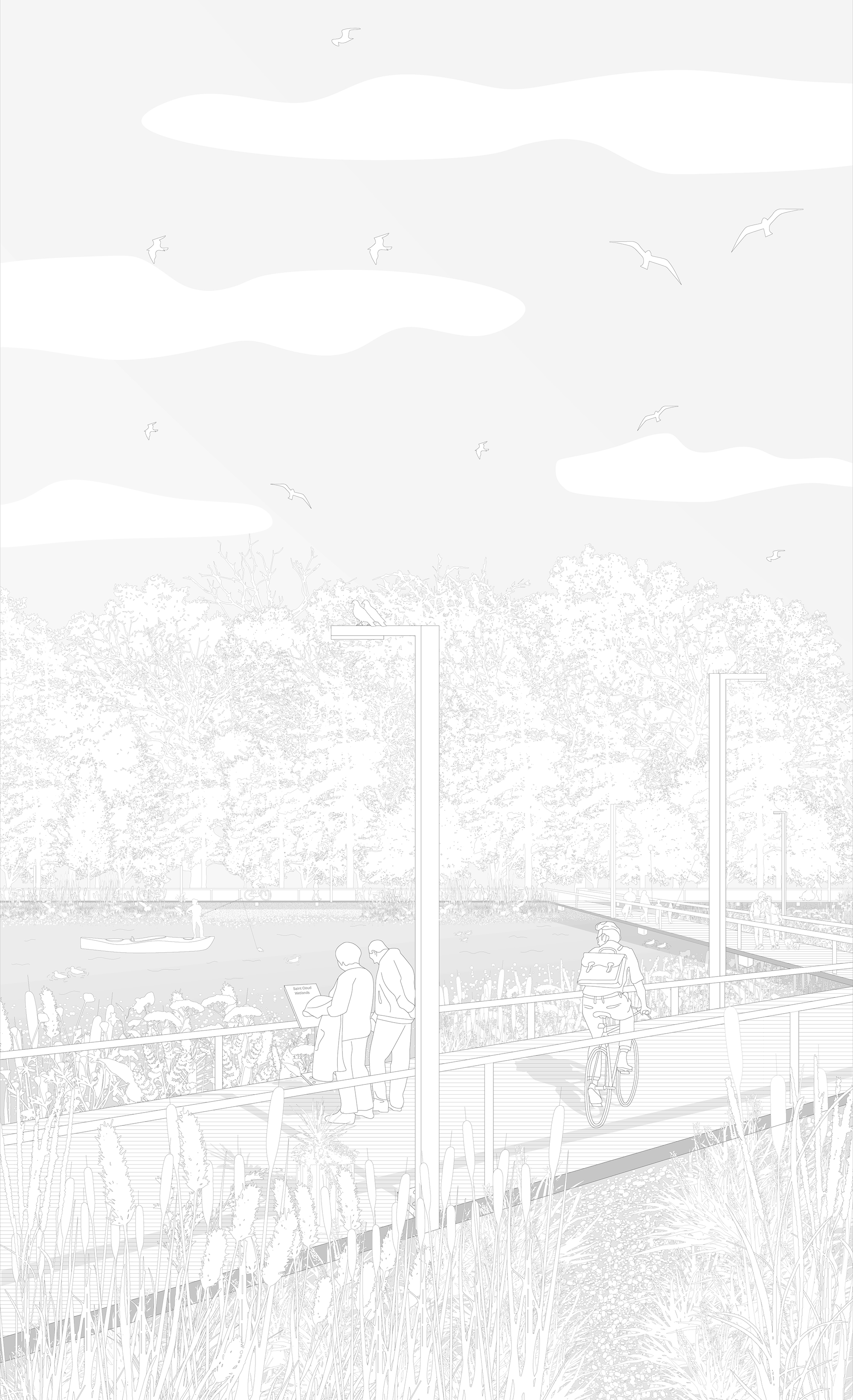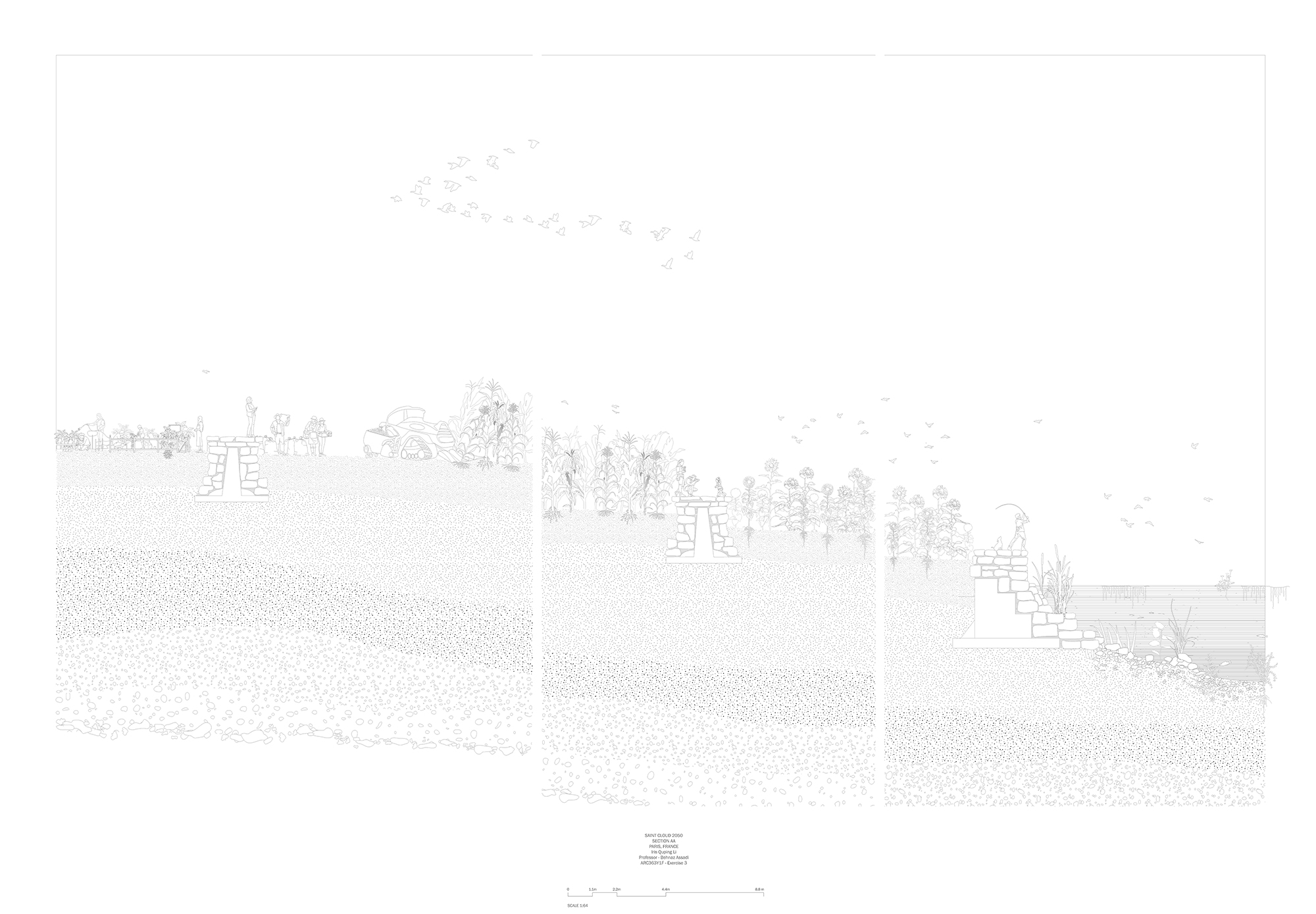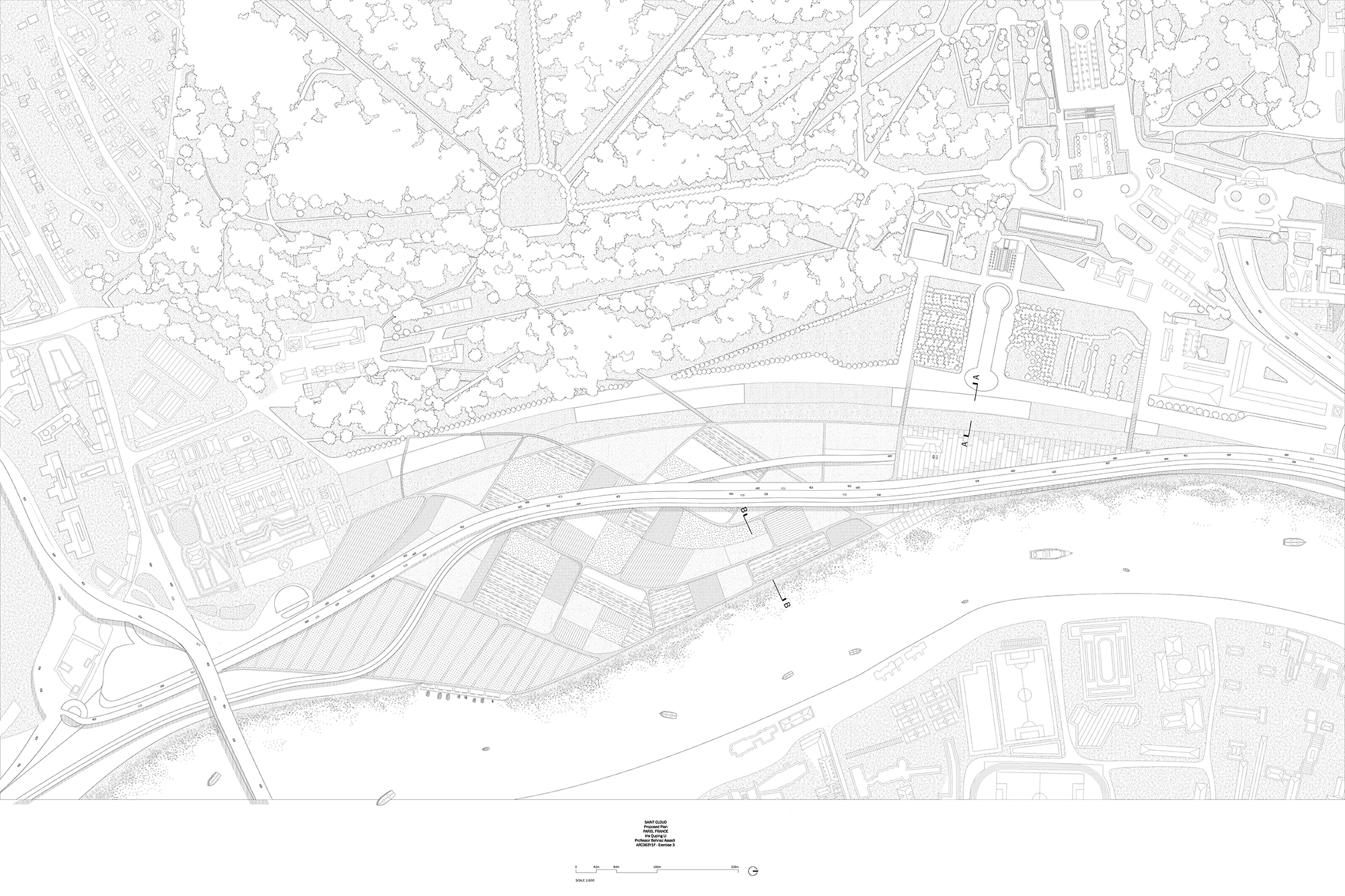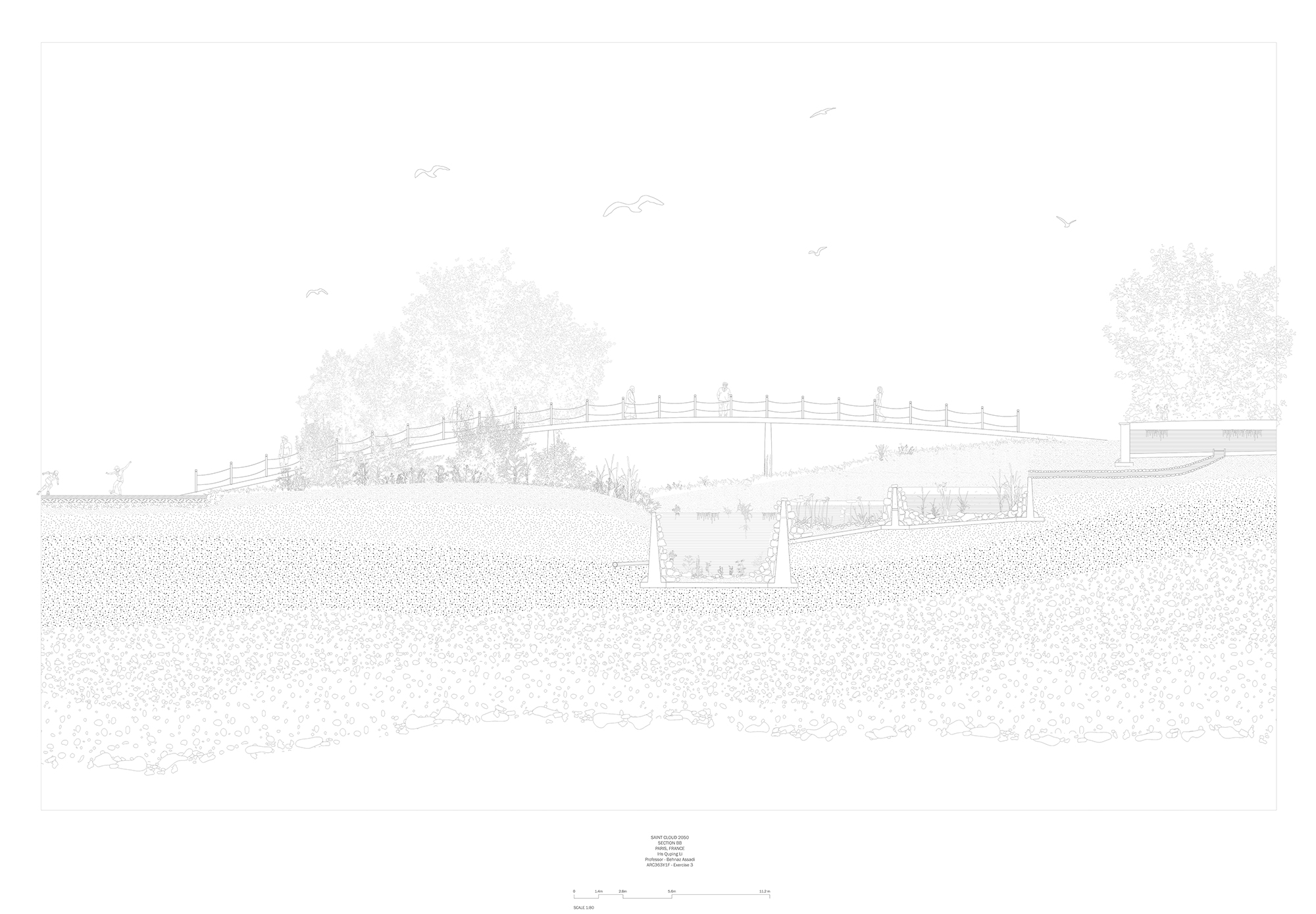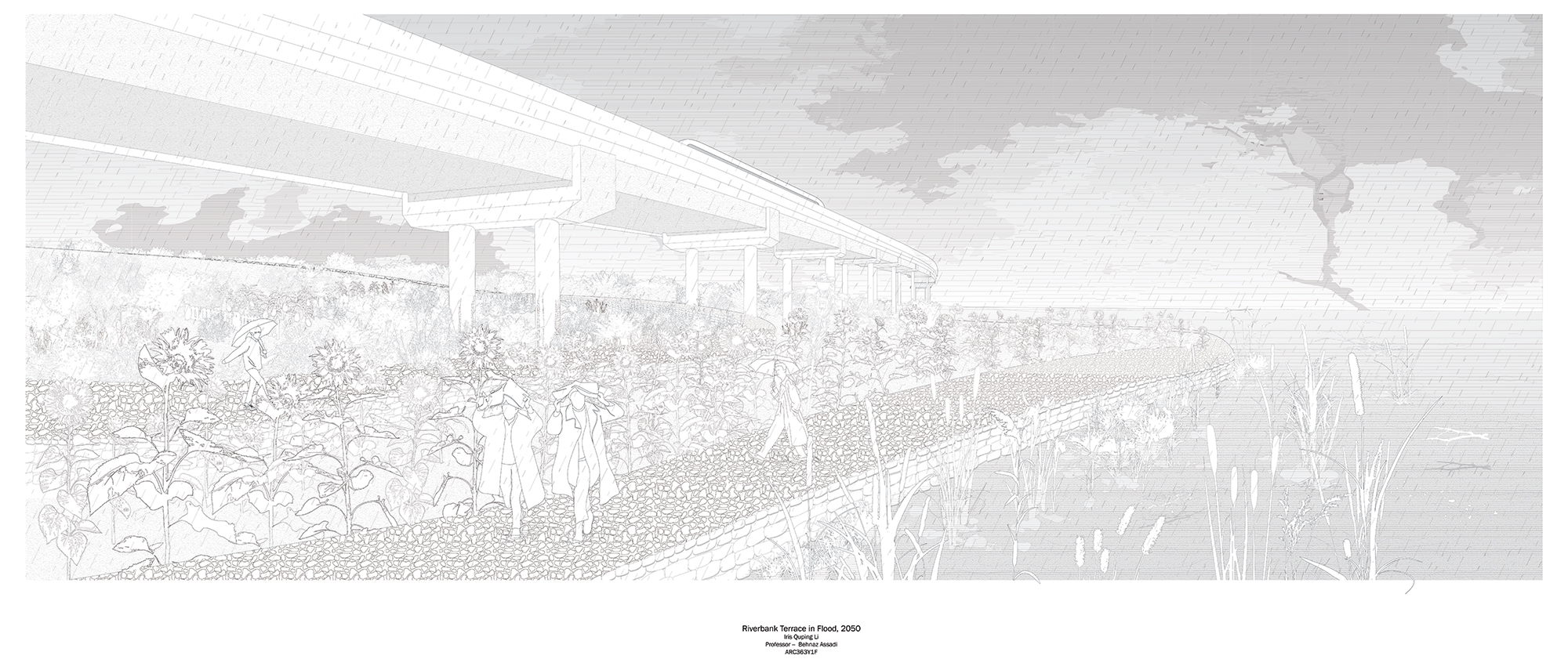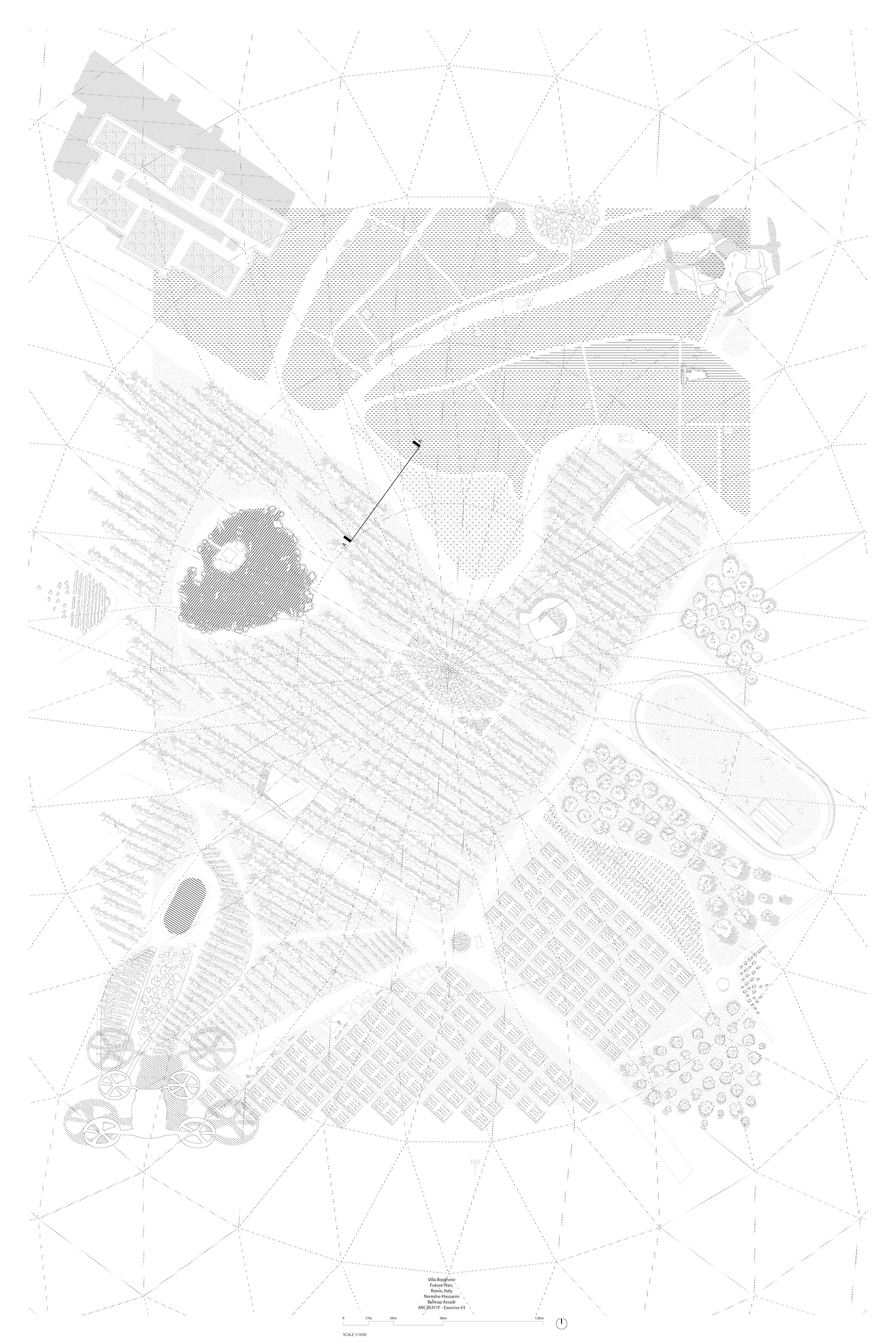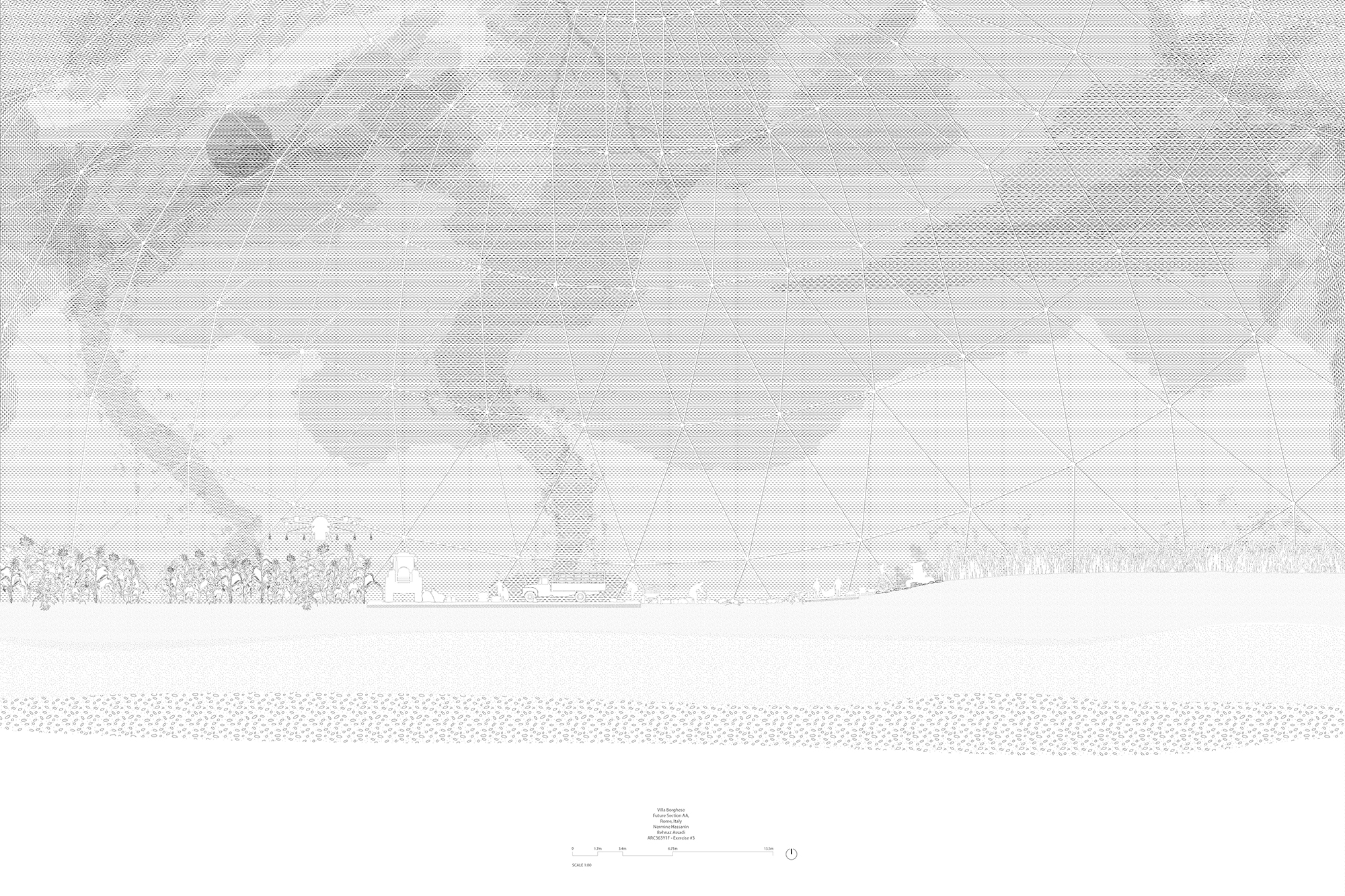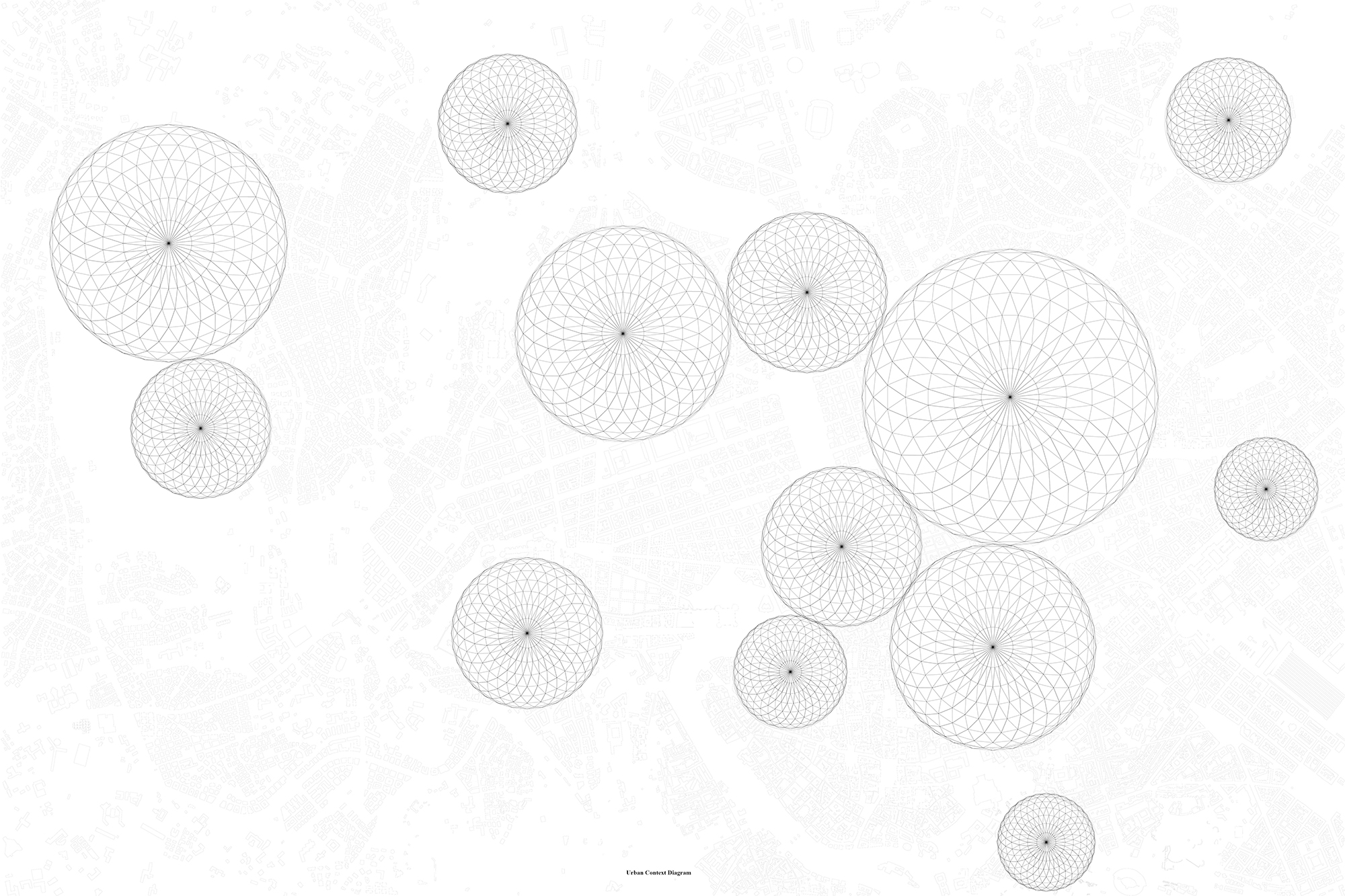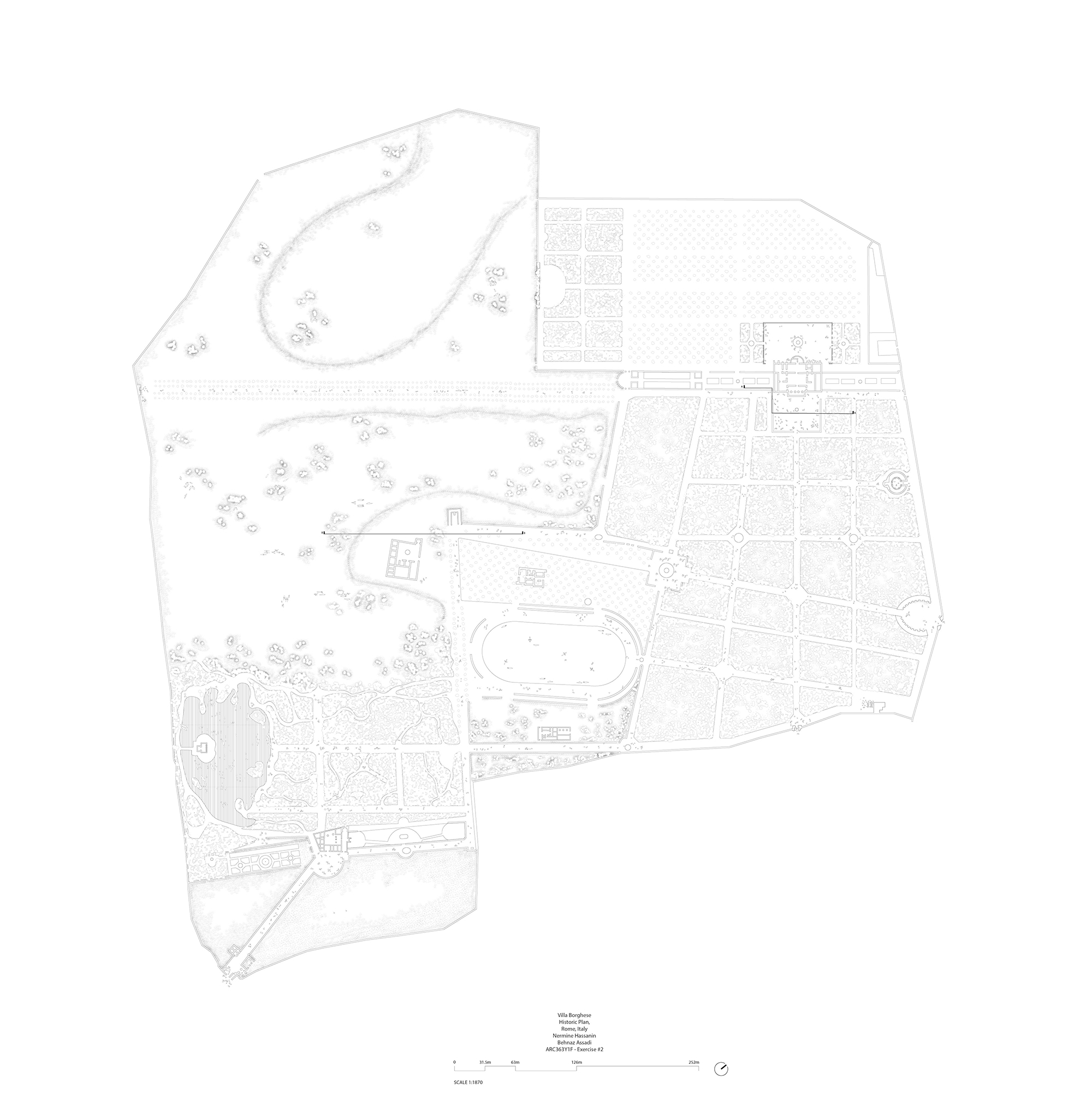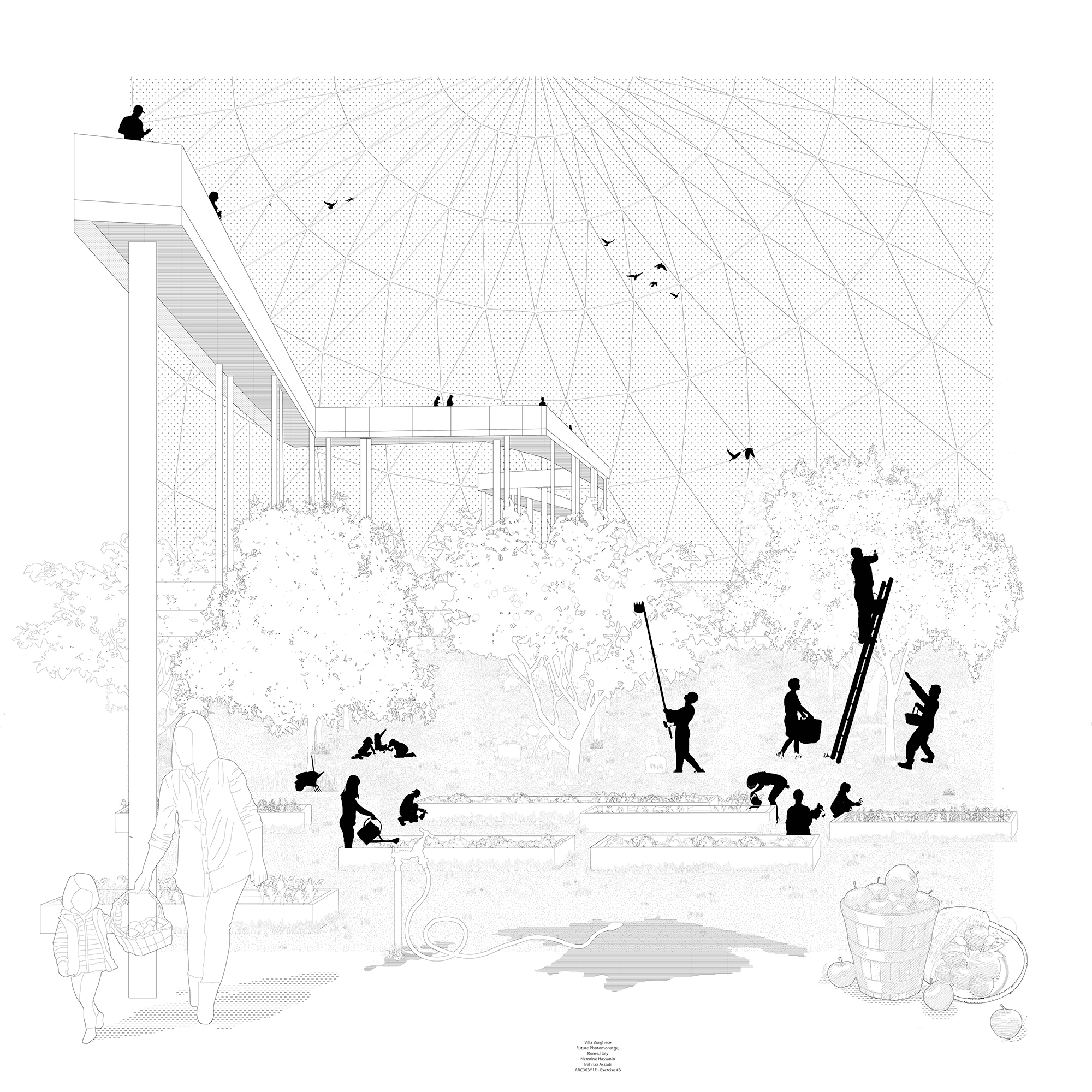ARC363: Landscape Architecture Studio 3
Each student in Landscape Architecture 3 studied one of nine different iconic gardens from around the world. Students studied the evolution of their assigned garden and then proposed a plan for its transformation over the next few decades.
Christopher Law
Christopher writes: “The revitalization of Kensington Gardens seeks to envision a balance of both anthropocentric and ecocentric nature within the bustling city of London, by establishing an oasis garden along the Long Water and restoring Charles Bridgeman’s pathway designs. The design and landscape ecological interventions are considered through the bombings in World War II, which created water logging issues, soil compaction, and soil contamination.”
(Instructor: Behnaz Assadi)
Jamie Latimer
Jamie writes: "In developing my design intervention, I was motivated by the landscape history of the MOMA Rio gardens, an interest in the impact of geographic and environmental transformations of large-scale anthropogenic urban interventions, and environmental concern for the contemporary condition of Guanabara Bay. I focused my scheme around water, marine ecology and the preexisting endemic coastal marine ecosystems, establishing a landscape archive of ecological heritage. I prioritized the ecological health and rehabilitation of marine ecosystems by implementing a network of constructed wetland water gardens that form a continuous buffer landscape along the site’s shoreline. Roberto Burle Marx championed Brazilian environmental nationalism by showcasing native plant species in his original design of the MOMA gardens. My scheme aligns itself with Marx’s approach, presenting elements of the region’s biodiverse marine life in the gardens.
As a whole, the system of water gardens creates an archipelago of aquatic micro-ecosystems. In addition to the initial rehabilitative strategies of the scheme, I hope to continue Burle Marx’s ambition to create a didactic landscape through botanical gardens. The coastal aquatic landscape can be considered an archive of local marine ecology for visitors to experience, engage with, and learn from. My proposal seeks to reconcile an ecological conservationist approach with efforts to augment the park’s accessibility as an urban public leisure landscape, and to foster an engagement and renewed appreciation for dynamic marine ecosystems."
(Instructor: Behnaz Assadi)
Louis Zhang
"My project echoes the environmental impact on Saint-Cloud. In the history portion of the studio, I explored the decay condition caused by the Franco-Prussian war and Paris’s severe weather. These moments captured my interest during the final design stage. The Seine is known as one of the most severely contaminated rivers in Europe. It is also infamous for its flooding frequencies, which are expected to be exacerbated by climate change. I designed with two things in mind: protecting the park itself from flooding, and addressing the Seine’s quality. Therefore, I focused on the east side of the park, closer to the river and in the flood plain, to turn an abandoned construction site into a constructed wetland. Next to the wetland, I envisioned transforming existing permeable surfaces into a water filtration system for the Seine by introducing species with ameliorative qualities."
(Instructor: Behnaz Assadi)
Iris Li
Iris writes: "Located by the Seine River, Saint-Cloud Park is a heritage park known for its gardens, fountains, and gravity-driven artificial hydraulic network. Flooding issues have affected several heritage fountains and the railway between the park and the river. This proposal is to construct a riverbank terraced buffer to reduce flooding impact, with two side benefits: one, provide food and jobs for people in need; two, reconnect the riverbank to the park. A rent-grow-donation system is applied for the terrace's maintenance. The lower layers of the terrace are planted with food crops, and the top layer is subdivided into rentable vegetable gardens. The vegetable gardens' rent is used to pay for labour and maintenance, and the crop yield from lower layers is donated to charity organizations. Taking advantage of the historical hydraulic network, the water from fountains is gathered into purification ponds that feed the terrace farm's drip irrigation system. The railway is elevated to protect it from flooding. The criss-cross stone walls separate the layers of the terrace farm. These stone walls start from the riverbank, go under the railway, connect to the wooden bridges on the purification ponds, and eventually connect with the park's existing circulation. In this way, the river is accessible again for the park visitors."
(Instructor: Behnaz Assadi)
Nermine Hassanin
Nermine writes: "Increasing temperatures, rising CO2 levels, prevailing tropical storms, rising sea levels, glacier melting rates, and shrinking sea ice reflect a climate crisis and an ecological urgency. Studying the past and present conditions in Villa Borghese, my project imagines the possibility of a future climate-change scenario, the worst-case scenario, and the place of Villa Borghese within it. In a dystopian proposal, I envision the future of Villa Borghese as a productive landscape — one that produces food to sustain the ever-growing population while protected under a version of Buckminster Fuller’s geodesic dome. Villa Borghese becomes a survival garden, cultivating crops to provide nutrients necessary for the human diet while maintaining its recreational character. Nature has a beautiful way of correcting itself. All it needs is time. By isolating humans from the ecological system, nature did what it does best: it flourished."
(Instructor: Behnaz Assadi)


